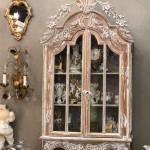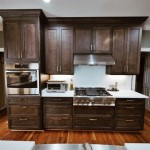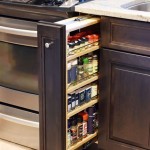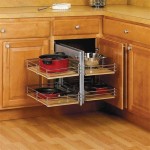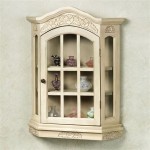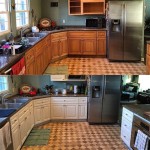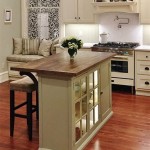Optimal Pull Placement on Cabinet Doors: A Comprehensive Guide
The placement of pulls on cabinet doors is a critical design detail often underestimated in kitchen and bathroom renovations. Proper pull placement affects both the aesthetics and functionality of cabinetry. A well-placed pull enhances the visual appeal, provides comfortable grip, and ensures the longevity of the cabinet door by distributing stress evenly. Conversely, incorrect placement can lead to an unbalanced look, awkward operation, and potential damage to the door over time. This article provides a detailed examination of the factors involved in determining the optimal pull placement on cabinet doors, covering various door styles, hardware types, and practical considerations.
Several factors contribute to achieving the ideal pull position. These encompass the style of the cabinet, the size and weight of the door, the type of pull being used (knob, bar pull, cup pull, etc.), and the overall design aesthetic of the space. A uniformed approach to placement across all cabinets is crucial for visual harmony, but slight adjustments may be necessary to accommodate unique situations such as cabinets flanking appliances or those located in corners. The following sections will delve deeper into these aspects, providing specific guidance on achieving optimal pull placement.
Understanding the Importance of Symmetry and Balance
Symmetry and balance are fundamental principles in design, and their application to pull placement is paramount. The human eye naturally seeks visual equilibrium, and discrepancies in pull placement, even if minor, can disrupt the overall aesthetic. Achieving symmetry involves considering the door's size, shape, and style, and then positioning the pull in a way that complements these elements. For standard cabinet doors, positioning the pull along the stile (the vertical frame member) is a common and often visually pleasing approach. The key is to maintain consistent vertical positioning across adjacent doors, creating a sense of order and continuity. Any deviance from this consistency should be deliberate and justified by a specific design intention.
For wider cabinet doors, particularly those exceeding 24 inches, a single pull might appear disproportionately small. In such cases, the use of two pulls per door may be considered. When employing two pulls, it is crucial to position them symmetrically, typically equidistant from the top and bottom edges of the door. The horizontal distance between the pulls should also be carefully considered, with wider doors generally benefiting from a greater separation. This approach not only enhances the visual balance but also distributes the pulling force more evenly, reducing stress on the door's hinges and frame.
Inset cabinets, where the door sits flush with the cabinet frame, present a unique consideration. The pull should be positioned in a way that allows for comfortable grip without the fingers colliding with the frame when opening the door. This may require slight adjustments to the vertical placement compared to overlay cabinets. Furthermore, the style of pull should be carefully selected to complement the clean lines and subtle details characteristic of inset cabinetry. A pull that is too ornate or bulky can detract from the understated elegance of this cabinet style.
Factors Influencing Vertical Pull Placement
Vertical placement refers to the distance from the top or bottom edge of the cabinet door to the center of the pull. A commonly cited guideline is to position the pull 2.5 to 3 inches from the top edge of upper cabinets and the top edge of lower cabinet doors. However, this rule of thumb should be considered a starting point, and adjustments may be necessary based on specific circumstances. For example, taller cabinets may benefit from a slightly higher pull placement to improve ease of access, while shorter cabinets may require a lower placement to maintain visual balance.
The height of the user is another important factor. If the cabinets are primarily used by individuals who are taller or shorter than average, the pull placement should be adjusted accordingly to ensure comfortable operation. This is particularly relevant in kitchens designed for individuals with mobility challenges, where accessibility is a paramount consideration. In such cases, it may be beneficial to install pulls at a height that is easily reachable from a seated position.
The style of the cabinet door also influences vertical pull placement. For shaker-style cabinets, a popular choice in contemporary kitchens, the pull is often positioned on the stile, aligning with the center of the inner panel. This approach leverages the clean lines and geometric forms of the shaker design, creating a visually cohesive look. For raised-panel cabinets, the pull may be positioned on the stile, or alternatively, on the raised panel itself. The decision depends on the overall design aesthetic and the desire to highlight the decorative detailing of the door.
Addressing Horizontal Pull Placement for Various Door Configurations
Horizontal pull placement is most relevant when dealing with wider cabinet doors or when using two pulls per door. For single pulls on standard-width doors, the horizontal position is less critical, as the pull is typically centered on the stile. However, for wider doors, the horizontal placement becomes a significant factor in both usability and aesthetics.
When using two pulls on a wider door, the horizontal distance between the pulls should be carefully considered. A general guideline is to position the pulls approximately one-third of the door's width from each edge. This creates a balanced look and distributes the pulling force evenly. However, the specific placement may need to be adjusted based on the style of pull being used. For example, longer bar pulls may require a greater separation to prevent the user's hands from colliding when opening the door.
Corner cabinets present unique challenges in terms of pull placement. Blind corner cabinets, which have a portion of the cabinet hidden behind the adjacent cabinet, often require pulls to be offset to accommodate the hardware and allow for the door to swing open without obstruction. In such cases, it may be necessary to experiment with different pull positions to find the optimal balance between functionality and aesthetics. Lazy Susan corner cabinets typically have a single door that is hinged to the cabinet frame. The pull should be positioned in a way that allows for easy access to the cabinet's contents, typically near the center of the door.
Drawers, while not doors, are often part of the same cabinetry system, and their pull placement should be consistent with the doors. For standard drawers, a single pull is usually positioned in the center. For wider drawers, two pulls may be used, mirroring the approach used for wider cabinet doors. The vertical placement of the drawer pulls should also be consistent with the door pulls, creating a unified and cohesive look throughout the kitchen or bathroom.
The type of pull itself influences the perceived horizontal placement. A cup pull, for example, offers a wider gripping surface than a knob. This may influence the spacing requirements if using two pulls in a horizontal configuration. One must consider the functional use of the pull in relationship to surrounding cabinetry components to ensure there is ample space to use the pull without striking adjacent elements.
The Role of Hardware Style in Determining Pull Placement
The style of hardware significantly impacts the overall aesthetic and influences the optimal pull placement. Knobs, bar pulls, cup pulls, and other specialized hardware types each lend themselves to specific placement strategies. Knobs, being smaller and more discreet, offer greater flexibility in placement. They can be positioned in various locations on the cabinet door, depending on the desired look. However, for larger or heavier doors, knobs may not provide sufficient leverage, and a larger pull may be more appropriate.
Bar pulls, with their elongated shape, often create a more modern and streamlined look. They are typically positioned horizontally on drawers and vertically on cabinet doors, providing a comfortable grip and a contemporary aesthetic. The length of the bar pull should be proportionate to the size of the door or drawer, with longer pulls generally being used on larger surfaces. The style of the bar pull, such as a straight bar, offers varying aesthetic looks, which in turn can influence its placement. For example, a bar pull with intricate shaping may require a more central placement to emphasize the design details.
Cup pulls, also known as bin pulls, are a classic choice often associated with traditional or farmhouse-style kitchens. They are typically mounted horizontally on drawers and are characterized by their curved shape that provides a comfortable gripping surface. The placement of cup pulls should be carefully considered to ensure that they do not interfere with the opening or closing of adjacent drawers or cabinets. The curvature of the style also influence the spacing requirements. For example, a deeply curved cup pull may restrict the user's hand more so than one with a shallower curve.
Specialized hardware, such as appliance pulls or recessed pulls, require specific placement considerations. Appliance pulls, designed for larger appliances like refrigerators and dishwashers, are typically longer and more robust than standard cabinet pulls. They should be positioned in a way that provides ample leverage for opening and closing the appliance door. Recessed pulls, which are flush with the surface of the cabinet door, offer a minimalist look and are often used in contemporary designs. They require precise installation and placement to ensure that they are both functional and aesthetically pleasing.
The finish of the hardware also plays a role in the overall design. A contrasting finish can accentuate the hardware and make it a focal point, while a matching finish can create a more subtle and integrated look. The choice of finish should be carefully considered in relation to the other design elements in the space, such as the cabinet color, countertop material, and lighting fixtures.

Cabinet Hardware Placement Guide

How To Install Cabinet Handles Straight Without Losing Your Mind

Where To Place Cabinet Hardware Emtek Living Blog

Cabinet Hardware Placement Guide

The Ultimate Guide For Cabinet Hardware Placement And Sizing

Cabinet Hardware Installation Guide At Cabinetknob Com

A Designer S Guide To Hardware Placement

4s And Skinny Narrow Shaker Hardware Placement Taylorcraft Cabinet Door Company

An Easy Cabinet Hardware Placement Guide Tidbits Twine

How To Install New Cabinet Hardware Blog Doorcorner Com
Related Posts


